Abstract
A cyanide-metabolizing bacterium, strain DF3, isolated from soil was identified as Alcaligenes xylosoxidans subsp. denitrificans. Whole cells and cell extracts of strain DF3 catalyzed hydrolysis of cyanide to formate and ammonia (HCN + 2H2O----HCOOH + NH3) without forming formamide as a free intermediate. The cyanide-hydrolyzing activity was inducibly produced in cells during growth in cyanide-containing media. Cyanate (OCN-) and a wide range of aliphatic and aromatic nitriles were not hydrolyzed by intact cells of A. xylosoxidans subsp. denitrificans DF3. Strain DF3 hydrolyzed cyanide with great efficacy. Thus, by using resting induced cells at a concentration of 11.3 mg (dry weight) per ml, the cyanide concentration could be reduced from 0.97 M (approximately 25,220 ppm) to less than 77 nM (approximately 0.002 ppm) in 55 h. Enzyme purification established that cyanide hydrolysis by A. xylosoxidans subsp. denitrificans DF3 was due to a single intracellular enzyme. The soluble enzyme was purified approximately 160-fold, and the first 25 NH2-terminal amino acids were determined by automated Edman degradation. The molecular mass of the active enzyme (purity, greater than 97% as determined by amino acid sequencing) was estimated to be greater than 300,000 Da. The cyanide-hydrolyzing enzyme of A. xylosoxidans subsp. denitrificans DF3 was tentatively named cyanidase to distinguish it from known nitrilases (EC 3.5.5.1) which act on organic nitriles.
Full text
PDF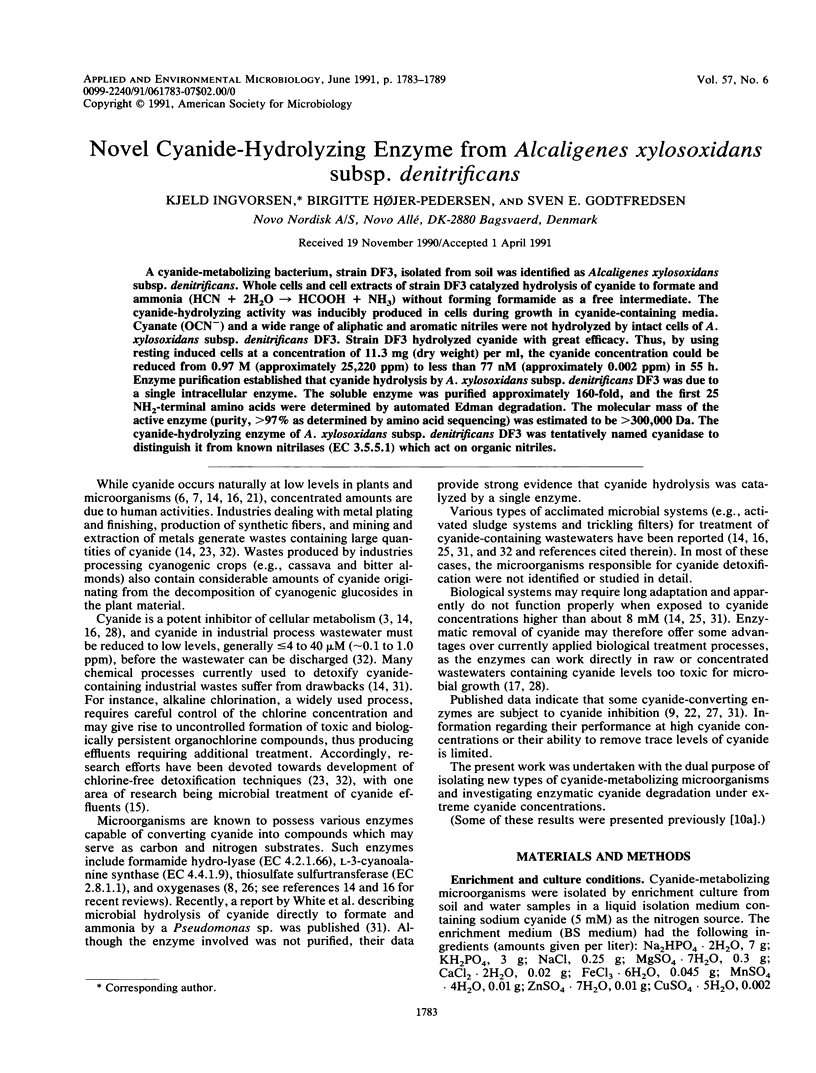
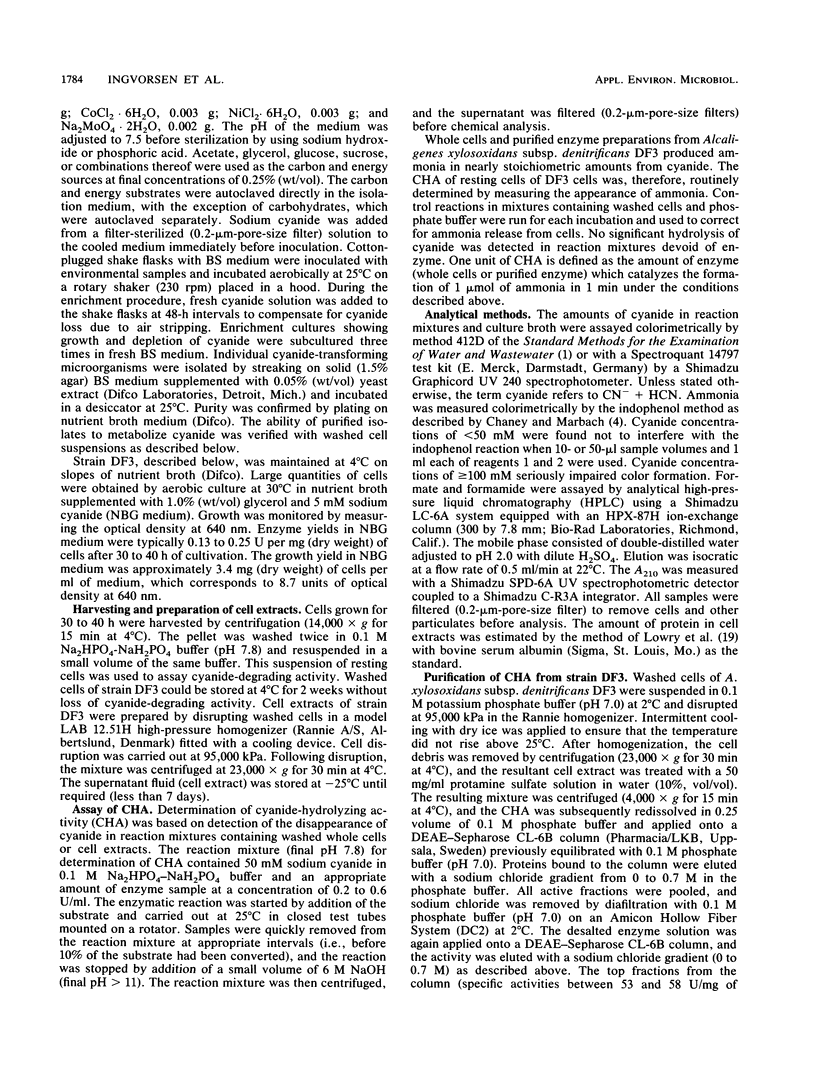
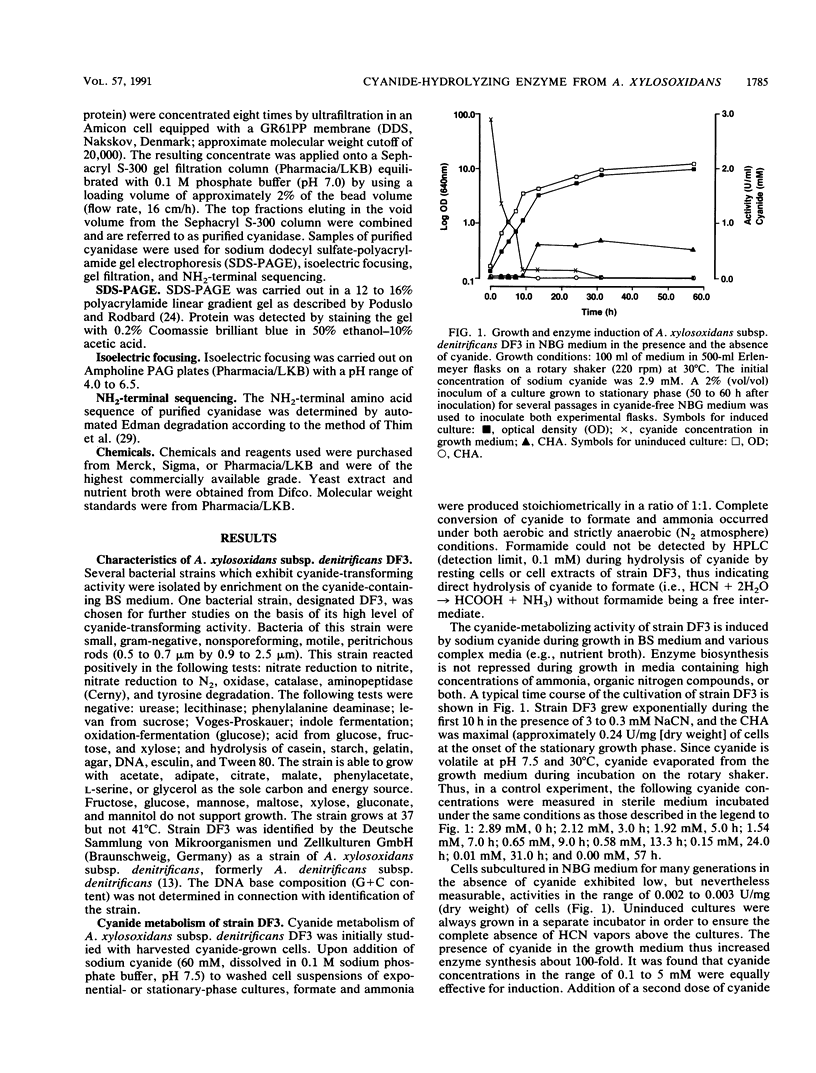
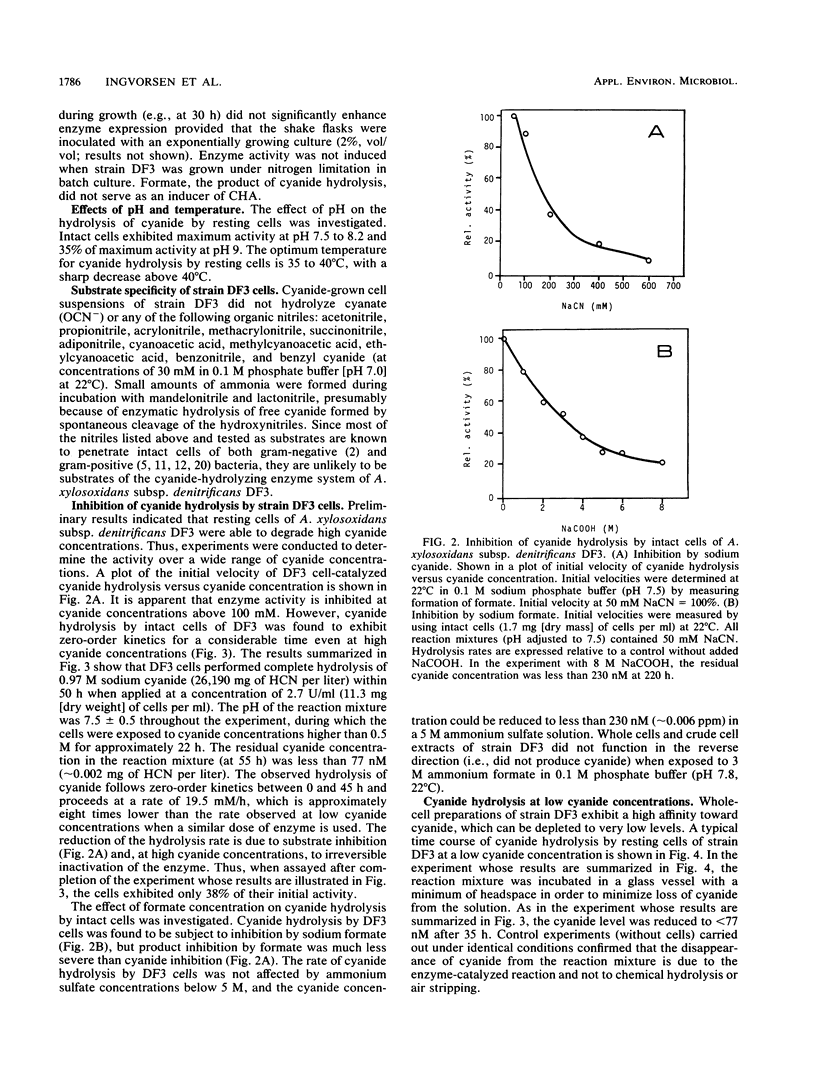

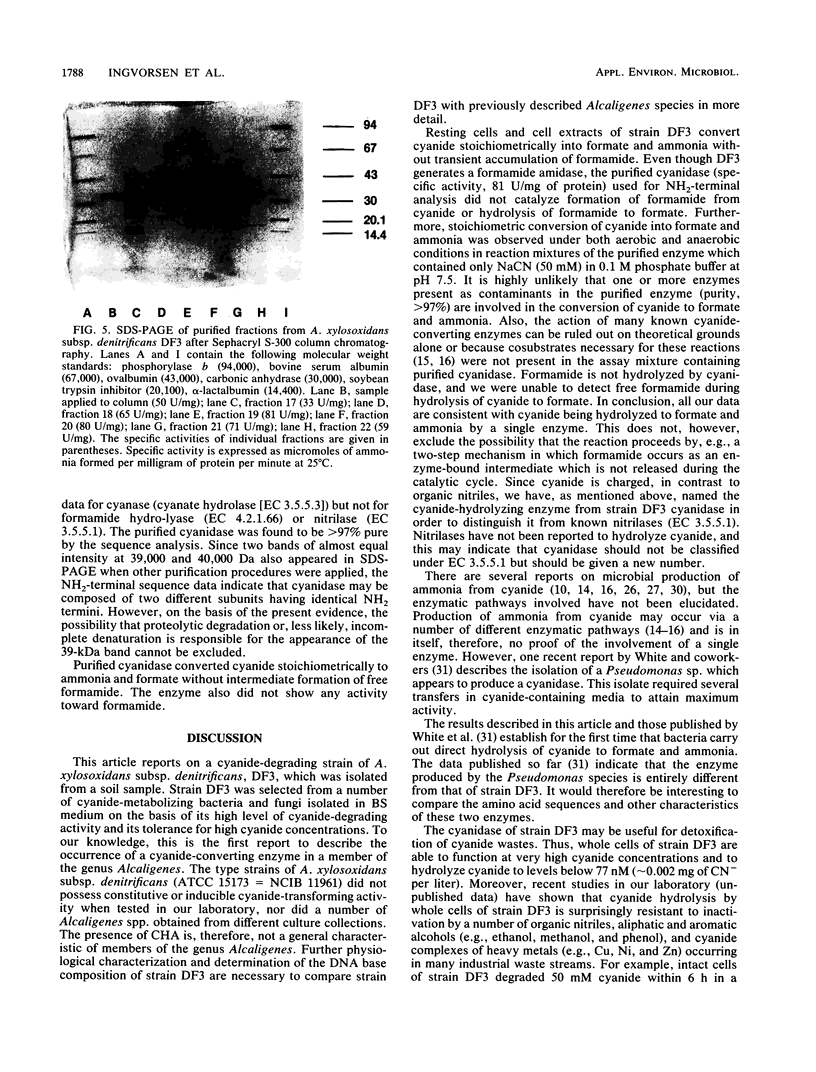
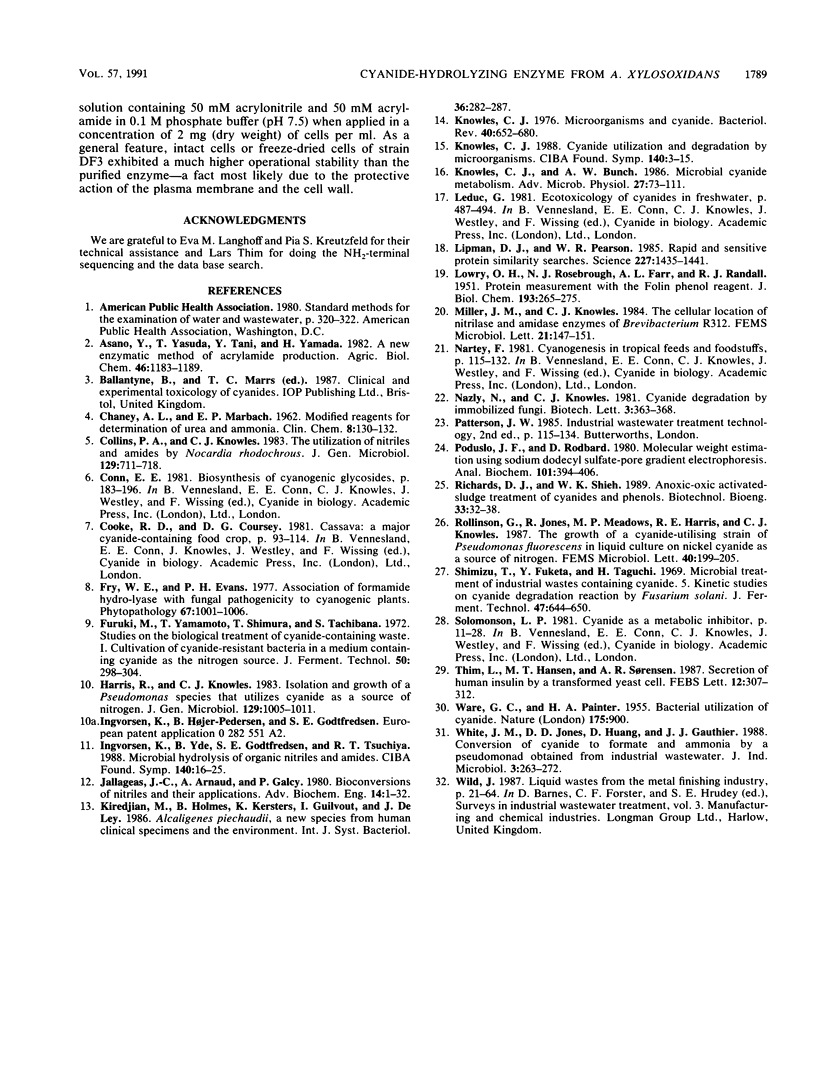
Images in this article
Selected References
These references are in PubMed. This may not be the complete list of references from this article.
- CHANEY A. L., MARBACH E. P. Modified reagents for determination of urea and ammonia. Clin Chem. 1962 Apr;8:130–132. [PubMed] [Google Scholar]
- Harris R., Knowles C. J. Isolation and growth of a Pseudomonas species that utilizes cyanide as a source of nitrogen. J Gen Microbiol. 1983 Apr;129(4):1005–1011. doi: 10.1099/00221287-129-4-1005. [DOI] [PubMed] [Google Scholar]
- Ingvorsen K., Yde B., Godtfredsen S. E., Tsuchiya R. T. Microbial hydrolysis of organic nitriles and amides. Ciba Found Symp. 1988;140:16–31. doi: 10.1002/9780470513712.ch3. [DOI] [PubMed] [Google Scholar]
- Knowles C. J., Bunch A. W. Microbial cyanide metabolism. Adv Microb Physiol. 1986;27:73–111. doi: 10.1016/s0065-2911(08)60304-5. [DOI] [PubMed] [Google Scholar]
- Knowles C. J. Cyanide utilization and degradation by microorganisms. Ciba Found Symp. 1988;140:3–15. doi: 10.1002/9780470513712.ch2. [DOI] [PubMed] [Google Scholar]
- Knowles C. J. Microorganisms and cyanide. Bacteriol Rev. 1976 Sep;40(3):652–680. doi: 10.1128/br.40.3.652-680.1976. [DOI] [PMC free article] [PubMed] [Google Scholar]
- LOWRY O. H., ROSEBROUGH N. J., FARR A. L., RANDALL R. J. Protein measurement with the Folin phenol reagent. J Biol Chem. 1951 Nov;193(1):265–275. [PubMed] [Google Scholar]
- Lipman D. J., Pearson W. R. Rapid and sensitive protein similarity searches. Science. 1985 Mar 22;227(4693):1435–1441. doi: 10.1126/science.2983426. [DOI] [PubMed] [Google Scholar]
- Poduslo J. F., Rodbard D. Molecular weight estimation using sodium dodecyl sulfate--pore gradient electrophoresis. Anal Biochem. 1980 Jan 15;101(2):394–406. doi: 10.1016/0003-2697(80)90205-5. [DOI] [PubMed] [Google Scholar]
- Thim L., Hansen M. T., Sørensen A. R. Secretion of human insulin by a transformed yeast cell. FEBS Lett. 1987 Feb 23;212(2):307–312. doi: 10.1016/0014-5793(87)81366-2. [DOI] [PubMed] [Google Scholar]
- WARE G. C., PAINTER H. A. Bacterial utilization of cyanide. Nature. 1955 May 21;175(4464):900–900. doi: 10.1038/175900a0. [DOI] [PubMed] [Google Scholar]



